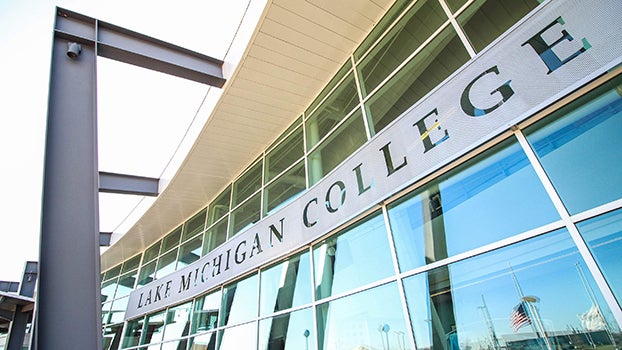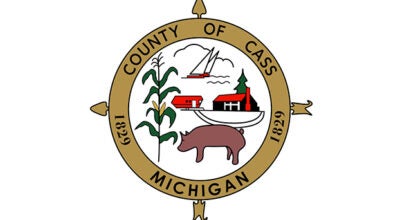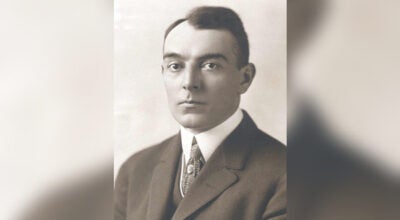Orphan Train committee dedicates downtown mural
Published 11:16 am Monday, October 16, 2017

- (Submitted photo)
In spite of the stormy weather that took place outside the confines of the Dowagiac Area History Museum that afternoon, Saturday marked the end of a project that had been in development for nearly two years — and the start of a bright new legacy for the city of Dowagiac.
Members of the “Starting a New Life – Dowagiac’s Orphan Train Story” project dedicated the new mural, depicting the 1854 arrival of the maiden Orphan Train trip to Dowagiac, that afternoon inside the basement of the downtown museum. The ceremony marked the conclusion of the yearlong celebration of the historic milestone, which — in addition to the painting of the mural beneath the Dowagiac Post Office on Pennsylvania Avenue downtown — included a performance at the Beckwith Theatre, the creation of a coloring book based on the Orphan Train story, a reunion for descendants of train riders and the creation of a commemorative cancellation ink stamp by the U.S. Postal Service.
Saturday’s ceremony was supposed to take place in front of the mural, in conjunction with downtown Under the Harvest Moon Festival. However, the massive rainstorm that swept through the region that day caused the downtown event to be called off at around 11:30 a.m. Due to the weather, the dedication ceremony, as well as the Orphan Train mural project committee’s booth, were moved to the basement of the museum.
The mural, which was painted over the summer by Cassopolis artist Ruth Andrews and a group of around 50 volunteers — ranging from professional artists to amateurs just wanting to pitch in — depicts the story of the group of 46 children who traveled to Dowagiac on the first Orphan Train. The program was established by philanthropist Charles Loring Brace, designed to relocate orphaned children from the streets of New York City to new families located in the Midwest.
A total of 37 children were taken into new homes in Dowagiac just a few days after their arrival, with the remaining children adopted into an orphanage in Iowa City.
“As the first stop of the Orphan Train, Dowagiac played an important part in the evolution of child welfare, foster care, adoption and child protective services over the next 150 years,” said Steve Arseneau, director of the Dowagiac Area History Museum and a member of the mural planning committee. “Without the success of that first train, who knew what would have happened to the 200,000 plus children who rode the train over the next 75 years.”
Around 20 months ago, Andrews — who had worked with the museum director on a mural depicting the famous Kentucky Raid in Cassopolis nearly a decade ago — approached Arseneau with the idea of creating piece of public artwork about the Orphan Train in Dowagiac. From there, others in the community joined the effort to design and create the artwork, as well as plan events to commemorate the history making moment in Dowagiac and the country’s history.
Andrews said her design for the mural incorporates several elements that one typically finds in public artwork: a protest against the suffering that riders of the first train suffered on the streets of New York, a historical telling of their journey and a reflection of the emotions that the children experienced after finding their new homes — joy and acceptance for many, but sorrow and rejection for a few.
The Cassopolis artist said she was thrilled that her artwork has joined the pantheon of sculptures and other works of public art on display throughout Dowagiac, and thanked the city for taking a chance and giving her the chance to create her art.
“This is really an unusual town,” Andrews said. “We are lucky to a part of it. I feel like I’m here now, too, because my creation is here.”
Accepting the mural on behalf of the city was Dowagiac Mayor Don Lyons, who said the mural will create a legacy that generations of residents will see and appreciate in the years to come.
“A city that doesn’t understand its past has lost a foundation to build a future on,” Lyons said. “That is why capturing these events — events that have made Dowagiac what it is and will build that foundation — is so critically important.”





